Key takeaways:
- Mindfulness meditation cultivates present-moment awareness, helping individuals observe thoughts and emotions without judgment.
- Regular practice enhances emotional resilience, focus, and interpersonal connections, transforming how one responds to stressors.
- Creating a dedicated space and routine significantly aids in establishing a consistent meditation practice.
- Key lessons from mindfulness include the importance of acceptance, gratitude, and the impact of consistency on mental clarity.

What is mindfulness meditation
Mindfulness meditation is the practice of being fully present and engaged in the moment, accepting one’s thoughts and feelings without judgment. I remember the first time I sat quietly, focusing on my breath, and I was amazed at how my busy mind began to settle. It made me wonder—why don’t we allow ourselves these moments of stillness more often?
At its core, mindfulness invites you to observe your thoughts and emotions as they arise, creating a sense of awareness that can transform our daily experiences. I recall feeling overwhelmed by stress when I started, yet during those meditation sessions, I gradually realized I could step back from my cluttered thoughts. Isn’t it powerful to think that a simple shift in focus can bring such clarity and calm?
Through mindfulness, I learned that it’s not about silencing the mind completely; rather, it’s embracing whatever comes up with an open heart and a curious mind. Each session became a journey of self-discovery for me, where I would encounter feelings I often brushed aside. It’s incredible how this practice can illuminate aspects of ourselves that we may not even realize are there.
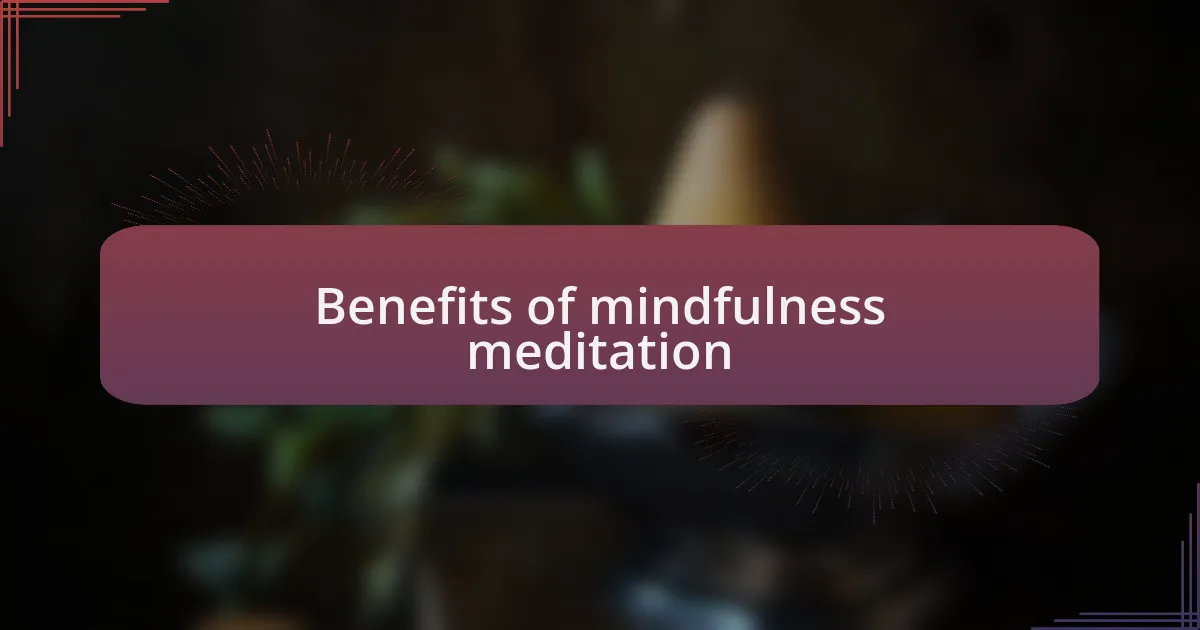
Benefits of mindfulness meditation
Mindfulness meditation offers a remarkable array of benefits that extend beyond mere relaxation. I remember attending a workshop where the facilitator emphasized how regular practice can reduce anxiety and improve emotional resilience. It struck me then how that one commitment transformed my daily interactions, allowing me to respond to stressors more calmly. Have you ever felt tangled up in your own emotions? Mindfulness helps untangle those knots.
Another significant advantage I noticed was the enhancement of my focus and concentration. In today’s fast-paced world, distractions are everywhere. I vividly recall struggling to finish tasks without my mind wandering. After consistently practicing mindfulness, I found that my ability to stay present improved dramatically. Isn’t it liberating to know we can train our minds to cut through the chaos?
Perhaps one of the most profound changes I experienced was a deeper sense of connection to others. Mindfulness fostered empathy within me. When I took the time to be present, I found myself listening more intently, genuinely connecting with friends and family. Did you know that being more attuned to others can significantly enhance our relationships? It’s a beautiful reminder of how mindfulness can enrich not just our internal landscape but also the connections we share with the world around us.

How to practice mindfulness meditation
To practice mindfulness meditation, I recommend setting aside a specific time and place for your sessions. I started by designating my quiet corner at home, which made all the difference in creating a peaceful environment. Have you noticed how a comfortable setting can affect your focus? By creating that dedicated space, I began to associate it with mindfulness, making it easier to slip into a meditative state.
As you sit comfortably, I find it helpful to close your eyes and take a few deep breaths. Initially, I struggled to keep my mind from racing, but acknowledging those thoughts without judgment was key. It’s like sitting by a river and simply watching the leaves float by—each thought is just another leaf. This gentle observation practice not only calmed my racing mind but gradually built my ability to remain focused.
After settling into your breath, I suggest concentrating on the present moment. Begin by noticing the sensations in your body—how does the ground feel beneath you? I once spent an entire session just focusing on the sensation of my heartbeat and how it connected me to the world around me. Asking yourself simple questions during practice can deepen your experience, enhancing your awareness. Why am I here? What am I feeling? These inquiries can help anchor you in the moment, making the practice not just a routine but a meaningful part of your day.
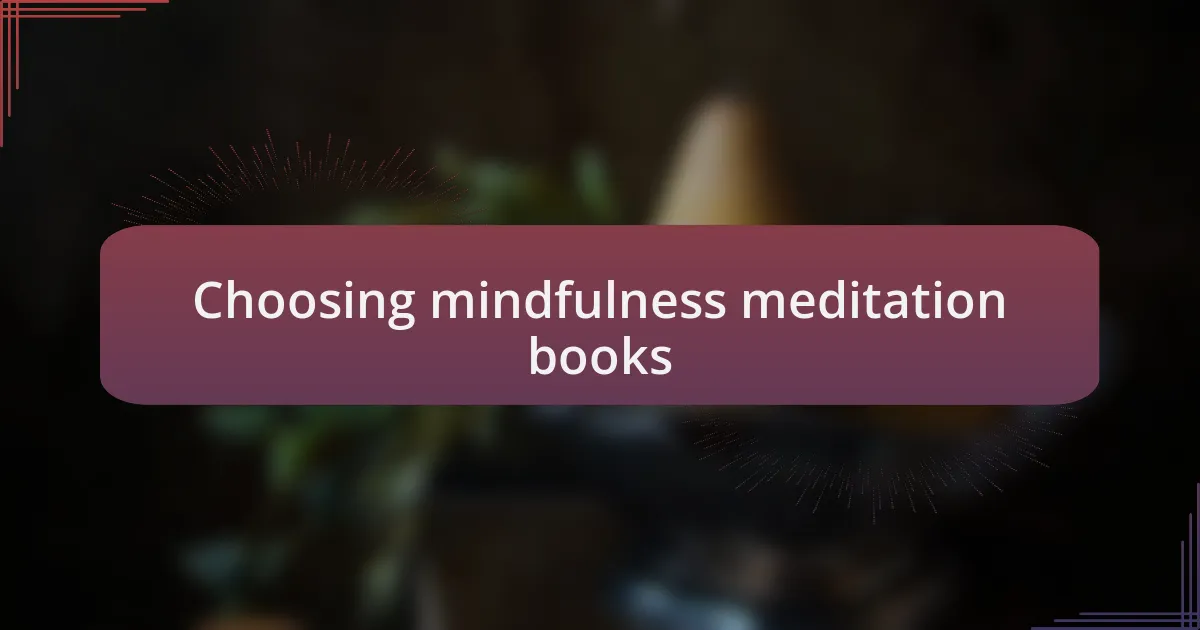
Choosing mindfulness meditation books
When it comes to selecting mindfulness meditation books, I always look for those that resonate with my personal journey. I remember picking up a book that not only introduced me to new techniques but also included relatable personal stories from the author. Have you ever felt a deeper connection to a practice because you could see yourself in someone else’s experiences? That’s the kind of book that truly enhances your understanding.
I often recommend checking out reviews or excerpts before making a purchase. I once browsed through a book at a local library and found the author’s tone strikingly soothing and relatable. It was a game-changer for me, as the right voice can make a significant difference in how we absorb the material. So, do pay attention to how the author communicates; you’ll want to feel as though they’re speaking directly to you.
Lastly, consider your personal goals and what you want to achieve from mindfulness meditation. When I first started, I was drawn to books that emphasized stress reduction. But as I explored deeper, I realized I craved works that highlighted self-compassion and emotional resilience. What do you want to cultivate in your practice? Identifying those aspirations can help you choose literature that genuinely supports your mindfulness journey.
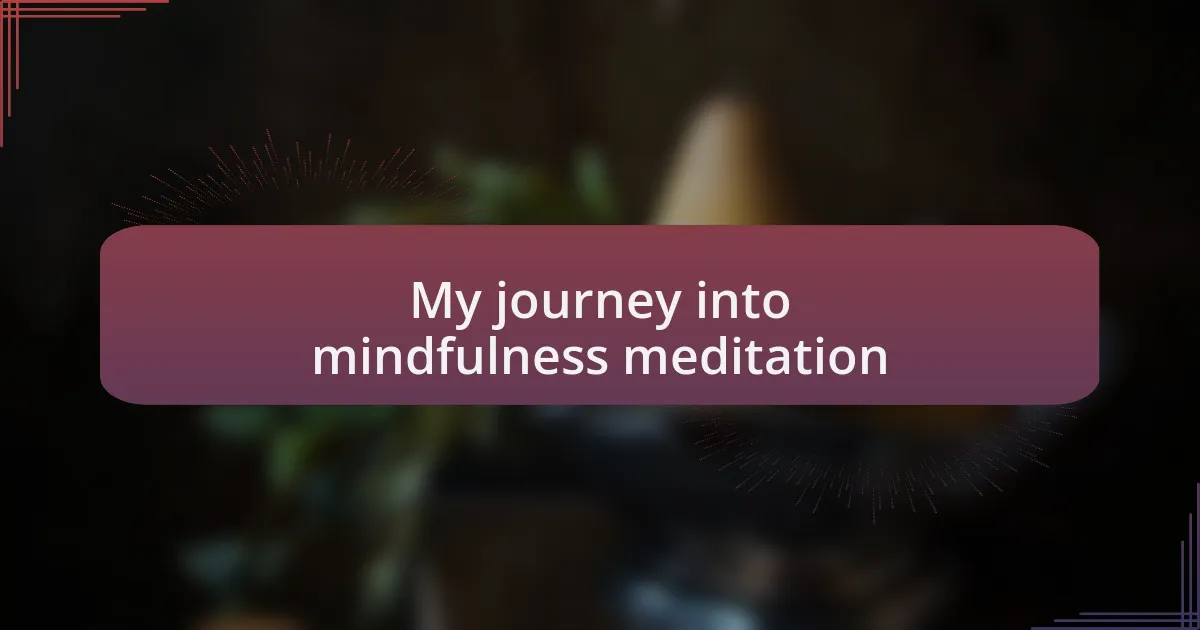
My journey into mindfulness meditation
In the beginning, my journey into mindfulness meditation felt overwhelming. I can still recall sitting cross-legged on my living room floor, eyes closed, grappling with a whirlwind of thoughts that refused to calm down. Have you faced those moments when stillness seems unattainable? Reflecting on that experience now, I realize it was all part of the process—an essential step toward finding my center.
As I persevered, I discovered that small shifts led to profound changes. One morning, after an intense session, I noticed how the sunlight filtering through my window brought warmth to my heart and clarity to my mind. That feeling—a blend of peace and awareness—felt like a gentle nudge, reminding me to savor the present moment. Isn’t it interesting how such simple experiences can spark a deeper understanding of ourselves?
Gradually, I learned to embrace the discomfort rather than run from it. There were days when I didn’t want to meditate; the thought of facing my own restlessness was daunting. Yet, when I pushed through those moments, I found myself on the other side with renewed insights and compassion towards my struggles. Isn’t it remarkable how the practice transforms us not just in meditation but also in our daily lives? Each session became a stepping stone on my path, revealing layers of resilience I never knew I had.
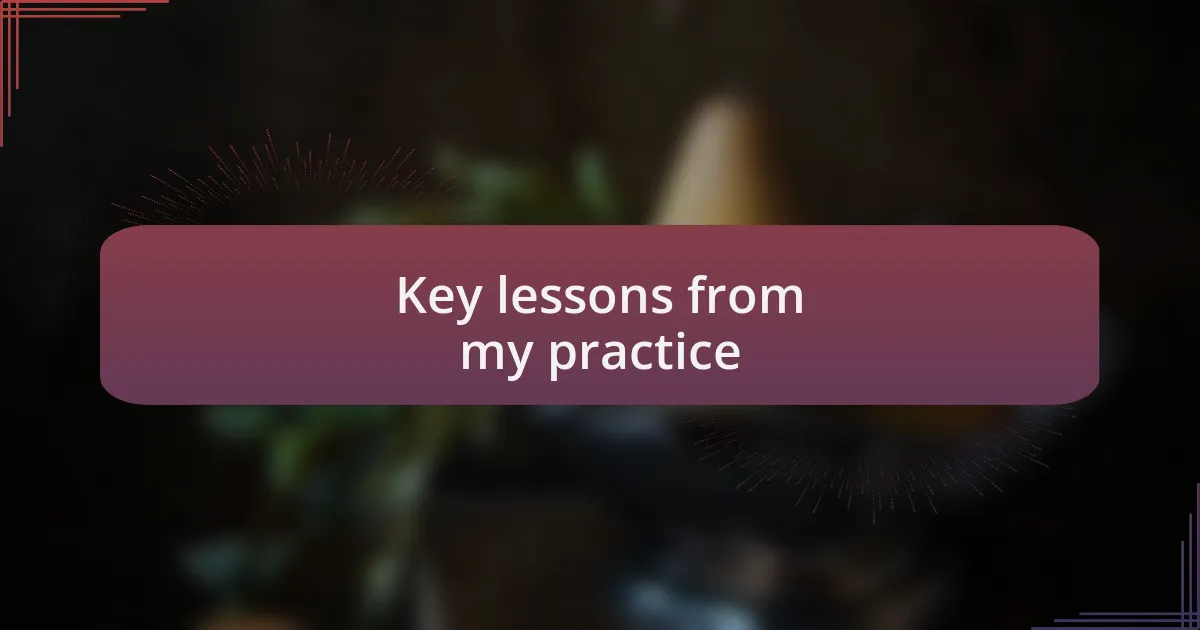
Key lessons from my practice
One key lesson I’ve learned from my mindfulness meditation practice is the power of acceptance. I remember a particularly challenging session where my mind raced with self-doubt. Instead of resisting those thoughts, I recognized them as part of my experience. It was liberating to acknowledge my feelings without judgment. Have you ever noticed how acceptance can shift your perspective? This simple shift opened the door for deeper self-awareness.
Another insight emerged when I began to cultivate gratitude during my sessions. One day, while focusing on my breath, I found myself appreciating the gentle rhythm of life itself. That moment of gratitude transformed my meditation from a chore into a cherished practice. It made me realize how easy it is to overlook the beauty around us. Have you considered how gratitude could enhance your own mindfulness journey?
Lastly, I’ve noticed the importance of consistency in my practice. Initially, I was sporadic, skipping days that felt too busy. However, when I committed to even a few minutes daily, I began to feel a tangible difference. My ability to focus improved, and my stress diminished. It’s curious how a few dedicated moments can significantly impact our mental clarity. Have you found that simple consistency can lead to profound growth in your own experiences?
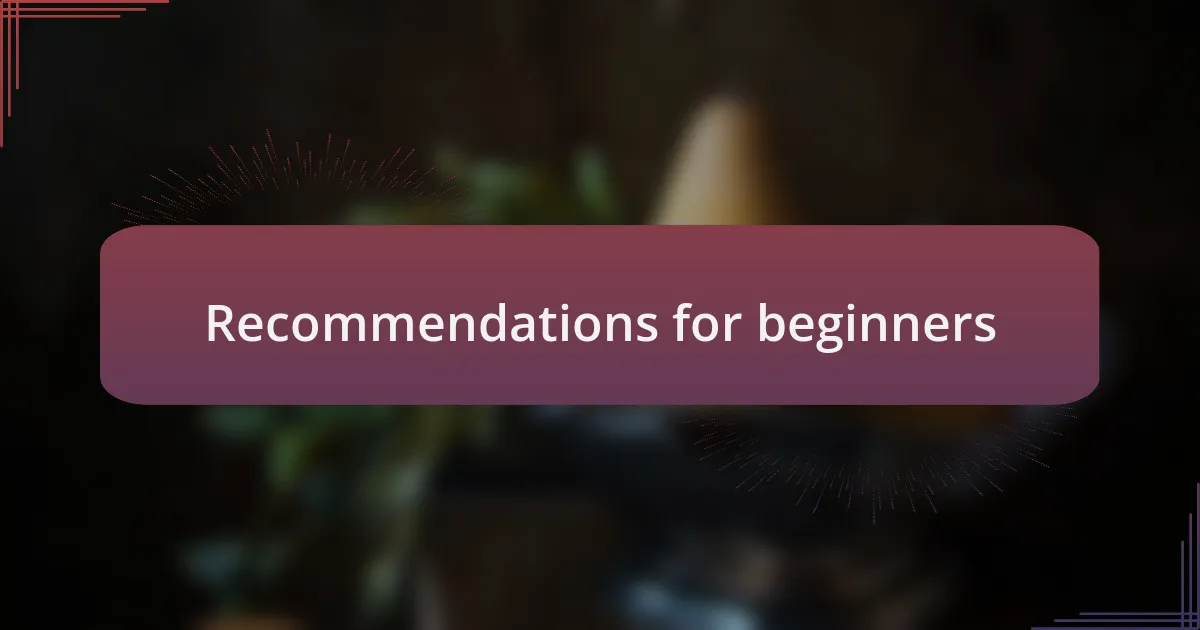
Recommendations for beginners
When starting out, I recommend setting a specific time for your meditation practice. Some mornings, I find that just five minutes of stillness can ground me for the day ahead. Have you tried meditating at the same time each day? Creating a routine helps in building consistency and makes it easier for mindfulness to become a natural part of your life.
Another tip is to choose a comfortable and quiet space. I remember finding a little nook by my window, where the sunlight would warm my face as I closed my eyes. That serene environment made all the difference. It invites a sense of peace, enhancing your focus. What spaces bring you comfort and calm? Finding your special spot can elevate your practice.
Lastly, don’t hesitate to use guided meditations, especially when you’re just starting. I initially struggled with silence, but a simple app with soothing guidance transformed my experience. It felt like having a friend walk beside me on this journey. How can guidance support your exploration of mindfulness? Embracing these tools can make your path feel less daunting and more accessible.